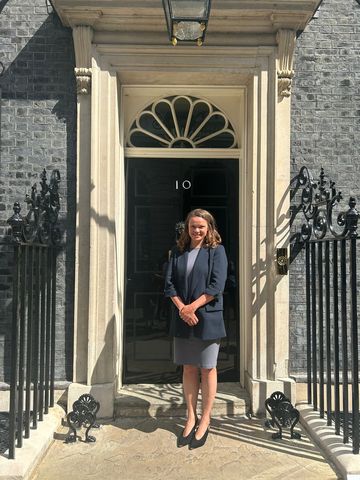Brighton and Hove City Council will not end this financial year with a £10 million budget shortfall, a leading councillor told the cabinet.
A forecast published in cabinet papers indicated that, after the first two months of this financial year, there was a risk that the council would end the year £10 million in the red.
But Councillor Jacob Taylor, the deputy leader of the council, said that the risk was in the event of a “do nothing” scenario.
At the cabinet meeting on Thursday (18 June), Councillor Taylor said that the council would need to stay focused on keeping measures in place to end the year on or under budget.
He said during the budget-setting process in February that the council had to make its biggest ever package of savings – £24 million – to close the largest budget gap in the council’s history – totalling £30 million.
Councillor Taylor, the cabinet member for finance, said: “We spend a hell of a lot of time as an organisation working on those savings packages, where can we find savings.
“It would be great if we could be doing more proactive and positive stuff and, indeed, we are as a council, which is fantastic, but those savings packages take work.”
He said that £6.4 million of the £24 million savings package was currently at risk but the situation was not bad considering the scale of savings – and it was early in the financial year.
Pressures on the budget were particularly acute in “demand-led” services such as community care and temporary housing, with a £4 million forecast overspend.
Health and adult social care budgets were under pressure because more people had increasingly complex demands, the cabinet was told.
Councillor Taylor said that the number of homeless people in England and Wales living in temporary housing has risen to a record 112,660 households.
In Brighton and Hove, the number of households presenting as homeless last year went up by 20 per cent and so far this year it had already increased by 30 per cent.
Spending on temporary housing was running at 20 per cent over budget.
The budget for schools was also at risk of an overspend – totalling £456,000 – and 46 schools required a “licensed deficit” totalling nearly £11 million. The cabinet papers said that the council did not have enough money to cover the shortfalls.
Council leader Bella Sankey said that she met with other Labour leaders this week in her capacity as deputy leader of the Labour group at the Local Government Association.

She said that other councils were experiencing similar financial pain in adult social care, children’s services and temporary housing.
Councillor Sankey said: “It was really heartening for me for the first time when speaking to ministers today to hear ministers who really understand the pain and the crisis that is now afflicting local government.
“These are ministers who have worked in local government for significant periods of time, that understand the importance of prevention and having the room and the space to do things differently, but also understand we have not had that room or space for so long.”









And yet the council are rich enough to give away public spaces for a few thousand pounds while private companies make millions, and rich enough to spend millions on cycle lanes that no one needs. Strange. It is almost as if they are incompetent…
You’re not that short-sighted my friend.
Just cancel VG3 – save the local taxpayer £7m!
Also reduce congestion and stop worsening air quality.
A no brainer really. Sadly not for the Transport Department and cllr Muten
This VG3 is Mutens baby and he is not giving it up and risk losing his friends in the bicycle brigade which he has shares in ! Muten,we ratepayers pay your wages don’t you know? STOP VG3 !!
Potholes and drainage!
My understanding around potholes was that there is a specific ringfenced fund for them from central, they simply didn’t have the manpower to facilitate the level of repairs required last year, so there’s an underspend. Of course, the next question should be, why don’t they hire more people, which I would be keen to find out.
The Council should consider using local expertise before paying £££’s to consultancy companies.
A recent review of respite services for disabled children is an example of time & money wasted and a great deal of stress for families with disabled children. The proposal to close Tudor House and relaunch it for out-of-county children with emotional & behavioural problems, was deeply flawed from the off. A monkey could have told the council it was entirely unsuitable on every level, but instead they implemented an expensive, drawn-out consultation.
Supported and emergency accommodations represent a significant financial burden for Brighton and Hove City Council, with approximately 70 organisations currently providing various forms of supported housing. Centralising these services in-house could streamline operations, eliminate redundant roles, and achieve substantial efficiency savings.
Additionally, the city’s housing stock needs continuous scrutiny and improvement. The recent Housing Report indicates a positive trend in addressing this issue, gradually reducing the need for emergency accommodations through an increase in available housing through purchases and developments, like the one on Coledean Lane, and the Kubric.
Moreover, it’s essential to reconsider the management and regulation of Airbnb and holiday lets citywide. Similar to HMOs, these should be regulated to prevent oversaturation in specific areas and ensure a balanced supply of long-term homes for residents, again reducing the pressure on emergency accommodations, and ultimately saving the council money.
When you use the term ‘the city’s housing stock’, are you referring to council housing or private housing?
I think most citizens would not agree that the council should be expending large amounts of funds by ‘scrutinising and improving’ privately owned property.
I believe they should when they are part of commissioned services, as many supported accommodations are.
So what does this mean for residents in the 8 tower blocks that need urgent work if BHCC are tightening the purse strings?
The other day it was reported that “Independent surveys of eight high rise towers in Brighton showed they do not meet the standards to withstand an explosion or fire and would be unable to “resist a disproportionate collapse”. The council are going to have to spend a fair packet sorting out the issues there, or are they just going to do a patch up job?
Why the ‘surveys’ the Labour council did in 2019 didn’t pick up the defects back then is a mystery too – tax payers have presumably had to pay again for the surveys done more recently.
These are very pertinent question that you ask. The issue of the risk of a disproportionate collapse in large panel system buildings has been common knowledge amongst local authorities since the Ronan Point disaster in the 1960s.
There’s a really bad smell about these flats in Whitehawk. Strange how a new build was suggested on the race hill but rejected for some reason or another but suddenly, these flats have problems. Couple of years ago they did some work and didn’t find any problems then. Just saying, smells.
Afraid that just sounds like conspiracy theory to me.
Good question Fletch, the Fire Safety (England) Regulations 2022, were introduced to UK law on 23 January 2023, so after the surveys in 2019. These regulations aim to enhance fire safety measures in multi-occupied residential buildings, especially in the wake of the Grenfell Tower tragedy, addressing key issues identified by the Grenfell Tower Inquiry. They include requirements for improved fire doors, better evacuation plans, and more thorough risk assessments to protect residents.
The irony with this is that the Grenfell disaster was nothing to do with inadequate fire doors and internal compartmentation, (the fire spread on the exterior of the building). It was more to do with this type of risk (and the consequences), being a relatively new issue and the ‘stay put’ policy adopted by the fire and rescue services being completely inappropriate in these circumstances.
Also, the issue of disproportionate collapse is not something that is new to the regulations and should have been identified in the 2019 surveys if such structural risks are present in these buildings.
I can see that being a kneejerk reaction, most certainly. I guess there is a lot of pressure to show doing something in reaction though.
Indeed so.
VG3 seems utter folly now and initial tenders costing the taxpayer £7 million may be under predicted after last year’s inflationary rises. Don’t forget this project was initially forecast to cost the local taxpayer £1 million